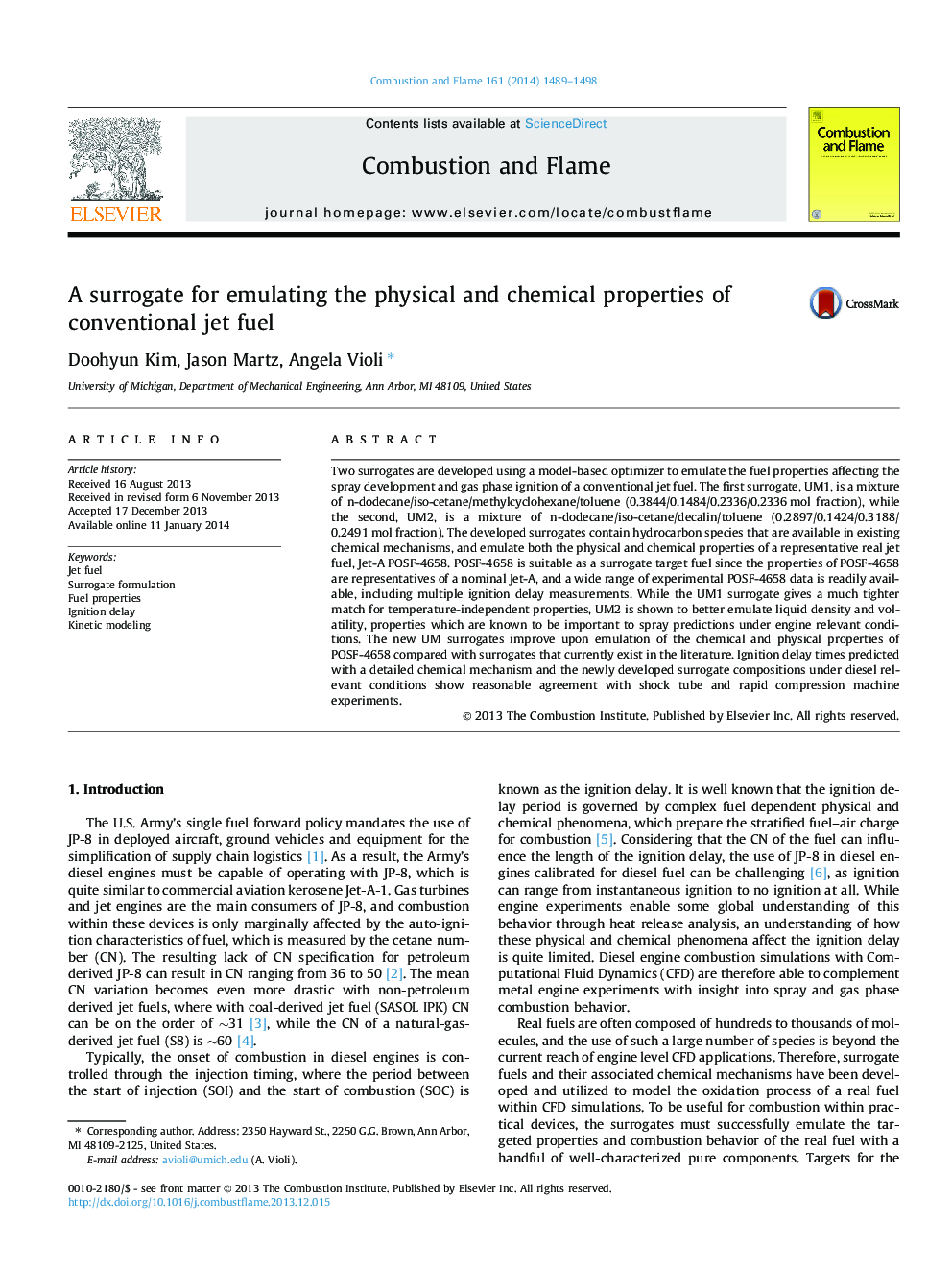| Article ID | Journal | Published Year | Pages | File Type |
|---|---|---|---|---|
| 10264648 | Combustion and Flame | 2014 | 10 Pages |
Abstract
Two surrogates are developed using a model-based optimizer to emulate the fuel properties affecting the spray development and gas phase ignition of a conventional jet fuel. The first surrogate, UM1, is a mixture of n-dodecane/iso-cetane/methylcyclohexane/toluene (0.3844/0.1484/0.2336/0.2336Â mol fraction), while the second, UM2, is a mixture of n-dodecane/iso-cetane/decalin/toluene (0.2897/0.1424/0.3188/0.2491Â mol fraction). The developed surrogates contain hydrocarbon species that are available in existing chemical mechanisms, and emulate both the physical and chemical properties of a representative real jet fuel, Jet-A POSF-4658. POSF-4658 is suitable as a surrogate target fuel since the properties of POSF-4658 are representatives of a nominal Jet-A, and a wide range of experimental POSF-4658 data is readily available, including multiple ignition delay measurements. While the UM1 surrogate gives a much tighter match for temperature-independent properties, UM2 is shown to better emulate liquid density and volatility, properties which are known to be important to spray predictions under engine relevant conditions. The new UM surrogates improve upon emulation of the chemical and physical properties of POSF-4658 compared with surrogates that currently exist in the literature. Ignition delay times predicted with a detailed chemical mechanism and the newly developed surrogate compositions under diesel relevant conditions show reasonable agreement with shock tube and rapid compression machine experiments.
Related Topics
Physical Sciences and Engineering
Chemical Engineering
Chemical Engineering (General)
Authors
Doohyun Kim, Jason Martz, Angela Violi,
